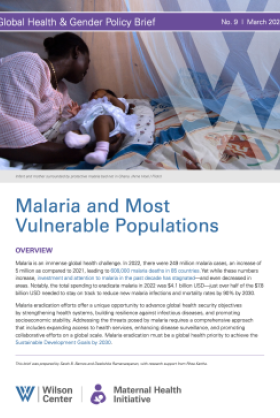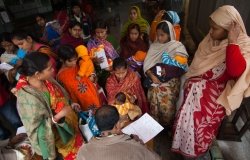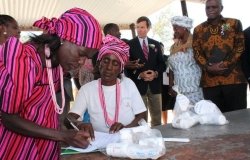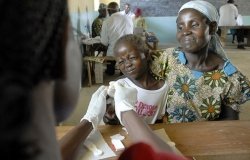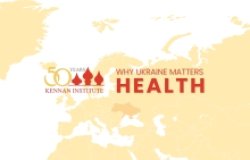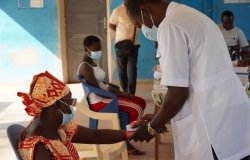Public-Private Partnerships for Health in Sub-Saharan Africa
Victor K. Barbiero, Visiting Professor, Department of Global Health, School of Public Health and Health Services, The George Washington University; Malcolm Barry Kistnasamy, Dean of Medicine, Nelson Mandela School of Medicine; Andrew Harmer, Research Fellow, London School of Hygiene and Tropical Medicine; Akudo Anyanwu Ikemba, CEO, Friends of the Global Fund Africa
Overview
Victor K. Barbiero, Visiting Professor, Department of Global Health, School of Public Health and Health Services, The George Washington University
Malcolm Barry Kistnasamy, Dean of Medicine, Nelson Mandela School of Medicine
Andrew Harmer, Research Fellow, London School of Hygiene and Tropical Medicine
Akudo Anyanwu Ikemba, CEO, Friends of the Global Fund Africa
 "Health in Africa is not going to be solely a public sector responsibility," said Victor K. Barbiero, professor at the George Washington University School of Public Health and Health Services and Global Health Initiative senior advisor. Barbiero spoke at a half-day forum co-sponsored by the Woodrow Wilson Center's Global Health Initiative and Africa Program, analyzing the effectiveness of public-private partnerships (PPP) in addressing the public health crisis in Sub-Saharan Africa (SSA). This forum was held with the generous support of
"Health in Africa is not going to be solely a public sector responsibility," said Victor K. Barbiero, professor at the George Washington University School of Public Health and Health Services and Global Health Initiative senior advisor. Barbiero spoke at a half-day forum co-sponsored by the Woodrow Wilson Center's Global Health Initiative and Africa Program, analyzing the effectiveness of public-private partnerships (PPP) in addressing the public health crisis in Sub-Saharan Africa (SSA). This forum was held with the generous support of
Pfizer, Inc., on December 6, 2007. "Where are the niches that the private sector can fill to deliver and sustain health services? What kinds of roles and responsibilities need to be annunciated? Perhaps a rethinking of the role of the public sector as a steward of health service delivery, rather than an implementer," suggested Barbiero.
Public-Private Partnerships have become a new and much discussed paradigm for the provision of public health and health care delivery systems in developing countries. However, little has been done to evaluate the effectiveness of these partnerships. Building upon the November 2, 2006 Global Health Initiative event, "Public and Private Provision of Health Care in Sub-Saharan Africa", participants gathered again to seek a better understanding of how PPPs can be used most effectively to improve the quality and quantity of healthcare in SSA. Dr. Barry Kistnasamy of the Nelson Mandela School of Medicine in South Africa, Andrew Harmer of the London School of Hygiene and Tropical Medicine, and Dr. Akudo Ikemba of Friends of the Global Fund Africa, delved into an overview of the current status and experiences with PPPs in Africa, the practices of highly successful partnerships, and the reality of cross-sectoral cooperation, respectively. The presentations were interspersed with lively and thought-provoking discussions of how to fully utilize the power of PPPs, enhance the participation of non-health sectors, and, ultimately, improve health outcomes in SSA.
Current Climate and Prospects for PPIs in Africa
 Dr. Barry Kistnasamy began by broadening the conversation of PPPs to Public-Private Interactions (PPI)—of which PPPs are one type of relationship. He proceeded to give an overview of different cross-sectoral interactions that make up the context of PPIs in Africa. He explained why they develop, what is necessary for their success, and what can be learned from past and present interactions to improve their success in the future.
Dr. Barry Kistnasamy began by broadening the conversation of PPPs to Public-Private Interactions (PPI)—of which PPPs are one type of relationship. He proceeded to give an overview of different cross-sectoral interactions that make up the context of PPIs in Africa. He explained why they develop, what is necessary for their success, and what can be learned from past and present interactions to improve their success in the future.
While global knowledge and development activities in health have expanded rapidly in recent years, the benefits have been distributed inequitably, mainly due to a lack of infrastructure, said Kistnasamy. "Next year will be 30 years since the Alma-Ata resolution for expansion of primary health care. We made fairly major investments in primary health care over time, but forgot that there was a secondary health system and a tertiary health system," he explained. Kistnasamy highlighted the lack of a referral structure for secondary and tertiary care and the importance of infrastructure capacity in other sectors besides health care, such as transportation. "Expanding the infrastructure is not just about the hospital or the ambulance vehicles; it is about the wider inter-sectoral collaboration that has to take place," he continued. Public-private interaction with one part of the system has the potential to go to waste if the interaction with the overall system—the economy, the electricity supply, the telephone linkages, the transport linkages—iss overlooked, Kistnasmy added. He then emphasized the important role of the government in coordinating the interaction between sectors and increasing the inputs of the private sector into health. Many now view the role of the State as that of a steward rather than as a service provider.
Despite public investment in health by both the government and non-governmental sectors, a consistently high burden of disease and an extreme shortage of healthcare providers in SSA have lead to the development of a large, highly fragmented, informal and formal private health care sector. Lack of coordination within health care systems has led to a situation where there are not enough resources, inadequate pooling, and ineffective spending patterns, Kistnasamy explained. "The big issue has been out of pocket payments. Thirty-six percent of the health care dollars are spent in out-of-pocket payments, so we are not getting any form of social insurance or pooling of the input," he said. Therefore, he explained, a government that provides better oversight of the private sector and encourages cross-sectoral cooperation and pooling of assets may have a greater impact on health than a government that attempts to act primarily as a provider of services.
Kistnasamy pointed out that there is little difference between the health care marketplace and any other market for goods and services. "It's almost seen as an anathema to have a profit maximization in the health sector, particularly at the point of delivery. People forget that there is a supply chain and many of the multinational technology companies and multinational pharmaceutical companies have to have a return on their investments—they are listed companies on stock exchanges, they have investors—and we are to procure from them," he explained. Therefore, maintaining healthcare as a public good at the point of delivery, but acknowledging the profit orientation of the supply chain and marketplace is key, stated Kistnasamy, and this is an important place for government intervention. The government can help regulate the marketplace through licensing, accreditation, and certificate of need, as well as providing additional financing (community financing, vouchers, or tax exemptions in addition to health insurance) to guarantee social insurance, which may or may not actually take the form of an insurance system.
Given the acknowledgement that the health care marketplace is profit oriented, Kistnasamy presented five ways government actors can engage the private sector to increase the quality and quantity of health services in SSA: contracting, leasing, concessions, franchising, and divestitures. Kistnasamy also noted significant pitfalls of engaging with the private sector. For example, governments should avoid sole sourcing and foster competition; specify services the private sector must provide; outline penalties; define costs and bearer of risk; and establish the duration of and responsibility for monitoring the contract. Kistnasamy also noted key exterior forces that affect all sectors involved in the provision of health care that must be taken into account when developing PPIs. Of particular importance are the agreements on trade-related aspects of intellectual property rights (TRIPS), the General Agreement on Trade and Tariffs (GATT), and issues of human capital reduction due to the South-to-North and East-to-West ‘brain drain'.
Kistnasamy concluded by highlighting the successful development of South Africa's PPP office, which establishes and monitors PPIs in many fields—not just health care—to improve collaboration between the government and the private sector. There are important lessons to be learned from the enabling mechanisms utilized by SA's office of PPPs, including strong leadership and political commitment, good governance, an appropriate regulatory framework, efficient tax systems, genuine risk transfers, a level playing field, and access to finance. He acknowledged that many other countries in SSA are lacking the resources that South Africa has and that in these areas it will take time to develop such an extensive implementary framework for PPIs. However, Kistnasamy encouraged SSA governments to "shift from doing and rowing, to thinking and steering . . . Move towards regulatory, monitoring, and information functions."
The discussion following his presentation touched on issues of the changing view of the healthcare marketplace and the role of government; the need to focus on prevention and building infrastructure and how the private sector can be encouraged to engage in these activities; the role of donor agencies and how these inputs can both positively and negatively affect the health systems in SSA; the need for cooperation within the government and between ministries; and the overarching need for increased and improved leadership.
Developing best practices for PPPs
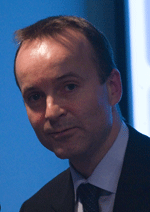 The difficulty with researching PPPs is that it is a large, complex subject with many different facets, noted Andrew Harmer. As a researcher, he needs to understand different aspects of the problem, the diverse effects the partnerships have at the country-, national-, and international-level, and the various diseases involved. Therefore, it is important to define the unit of analysis when talking about a PPP, said Harmer, who broadly defined what he was looking at as ‘Global Health PPPs' (GHPPPs) or, "relatively institutionalized initiatives, established to address global health problems, in which public and private-for-profit sector organizations have a voice in collective decision-making."
The difficulty with researching PPPs is that it is a large, complex subject with many different facets, noted Andrew Harmer. As a researcher, he needs to understand different aspects of the problem, the diverse effects the partnerships have at the country-, national-, and international-level, and the various diseases involved. Therefore, it is important to define the unit of analysis when talking about a PPP, said Harmer, who broadly defined what he was looking at as ‘Global Health PPPs' (GHPPPs) or, "relatively institutionalized initiatives, established to address global health problems, in which public and private-for-profit sector organizations have a voice in collective decision-making."
With this definition, Harmer and colleagues identified twenty GHPPPs, limiting themselves to international organizations and excluding national PPPs, in order to identify the key attributes of successful partnerships. There are so few partnerships within this definition because many PPPs do not include the voice of their partners at the decision-making level, and are therefore not true GHPPPs.
Harmer noted the difficulties encountered in analyzing and quantifying the effectiveness of PPPs. First, there is the issue of attribution, particularly in countries where several initiatives are at work, often with much overlap. "How do we know that a particular partnership is responsible for a particular effect? If you're trying to understand the impact or the effect that a partnership has at the country level, how do you know that that partnership is responsible?," asked Harmer. Secondly, there is a lack of data collection or very limited data on the effectiveness of PPPs. Of the twenty organizations that met Harmer's definition of GHPPPs, only five—Roll Back Malaria, GAVI Alliance, International AIDS Vaccine Initiative, Global Fund, and Stop TB—had any significant data on their activities and outcomes.
With these difficulties in mind, Harmer introduced the seven ‘habits' of highly effective GHPPPs that he and his colleagues identified as contributing to their success. The first habit is to embrace the modalities of the Paris Agenda—ownership, alignment, harmonization, managing for results, and accountability. This is something that the drug donation GHPPPs are doing well. He noted they "are proving to be well integrated into national systems and . . . transparent." Second, GHPPPs need to strive towards better representation of stakeholders at the Board level. The twenty organizations analyzed are moving towards greater diversity of representation on their Boards, with an increase in government representation from 2006 to 2007, a roughly even split of developed and developing country government representation, and strong Private sector representation. The third habit is to adopt standard operating procedures that clearly define partners' roles and responsibilities. Harmer highlighted the usefulness of the ‘SMART' objectives—specific, measurable, achievable, realistic, and time-bound—as well as good governance and transparency as a solid framework for successful PPP operation.
Harmer acknowledged improved oversight as the fourth habit. He noted a broad range in the extent to which GHPPPs assess the performance of partnerships. According to Harmer, such assessments should be clearly defined and mandatory. Additionally, there should be a set standard for the selection of all partners, which will help establish a system for managing conflicts of interest among partners.
The fifth habit is to value the fourth "P" of PPP—people. "Rather than thinking of brain drain, a more appropriate phrase would be brain in the drain," said Harmer, "where people's abilities are not being effectively utilized." The individual strengths of the partners should be an incentive for partnership and a key aspect to creating and maintaining effective PPPs.
The sixth habit is to ensure adequate resources. "There are a number of issues to think about when you're talking about funding and resources. One is the funding of the secretariat itself, the funding of the partnership, but also there is the wider issue of funding. The main concern that the people have working in sub-Saharan Africa, who are working with partnerships, is the question of sustainability of financing. That's the number one concern. Will the funds last?," explained Harmer. It is the unique funding schemes available to PPPs that can contribute to their success, but long-term planning should be a greater priority.
The final habit identified is to reassess the prevailing paradigm of PPP interaction. "Continued self-reflection of partnerships . . . is necessary," said Harmer. "If PPPs do anything they should engender a sense of public and private responsibility through partnerships. The big issue . . . is how to get private sector more involved. At the country level, the private for-profit sector is not anywhere near as much involved as the private not-for-profit sector. . . It's a major challenge."
Harmer concluded his presentation with a discussion of the potential of universal performance metrics for GHPPPs. "The benefits [of a metric] would be to guide performance enhancement in public-private partnerships, but also to guide investment decision-making of public-private partnership funding agencies," explained Harmer. He noted that certain individual PPPs utilize performance metrics to gauge financial indicators, but lack metrics to determine organizational and institutional performance. Lastly, Harmer noted that there is an absence of PPPs addressing non-communicable diseases. He questioned the void and challenged the audience to determine how PPPs can play a greater role in prevention and treatment of non-communicable diseases.
PPPs for Health in Africa: the Global Fund and Friends Africa
 "A combination of a global call to action against the diseases ravaging Africa, and ineffectiveness and inefficiency on the part of the public sector in providing public goods in particular in Africa, led to the birth of PPPs," explained Dr. Akudo Ikemba. "Public-private partnerships are really supposed to leverage a tremendous amount of money and skill from the various partners to combat these diseases," she said. However, major funding gaps – of $20 billion per year – still exist for AIDS, TB, and malaria. In addition to inadequate funding, Ikemba highlighted other challenges faced by PPPs, including governance, harmonization, conflict of interest, and effectiveness and efficiency.
"A combination of a global call to action against the diseases ravaging Africa, and ineffectiveness and inefficiency on the part of the public sector in providing public goods in particular in Africa, led to the birth of PPPs," explained Dr. Akudo Ikemba. "Public-private partnerships are really supposed to leverage a tremendous amount of money and skill from the various partners to combat these diseases," she said. However, major funding gaps – of $20 billion per year – still exist for AIDS, TB, and malaria. In addition to inadequate funding, Ikemba highlighted other challenges faced by PPPs, including governance, harmonization, conflict of interest, and effectiveness and efficiency.
Friends of the Global Fund Africa, of which Ikemba is the director, has worked to avoid the above pitfalls in their partnerships. She highlighted the organization's advisory board and global secretariat being comprised of representatives from "the private sector, civil society, and government . . . and we are bringing on regional representatives and country champions."
Friends Africa recently published a report on the "African perspective" of the Global Fund, which included the observations of all major stakeholders in an attempt to guide future Global Fund activities in the region. Additionally, in 2007 Friends Africa convened the top 50 CEOs in Nigeria, together with the Global Fund, with the result being increased funding and expanded Global Fund projects in the country.
Despite Friends Africa successes, its partnerships still face many barriers. "Advocacy [in] Africa is not bold, it's not effective, it's missing, and it needs strengthening and it needs funding," emphasized Ikemba. Additionally, "the African private sector is under-engaged in the fight, especially the African indigenous multinationals that we are seeing in banking [and] telecom . . . African governments are not committed enough to spending in health and meeting targets, and as a result, local counterpart funding is low."
Ikemba broadened her focus to discuss the structure of the Global Fund itself and how this particular PPP operates, as well as how relations between donor countries and recipient countries can be improved. She noted that common complaints among PPPs are that there is often a lot of pressure in partnerships; that partners are often out of sync; and that PPPs tend to lack accountability and clarity about whose interests are being met and how to sustain funding. The Global Fund works to avoid these pitfalls in several ways, including innovation in finding additional resources, support of national ownership, alignment of priorities, avoidance of implementing a top-down agenda on funding, and establishing an independent review process for its proposals and internal processes. Further, they make the grant process rapid and transparent by posting grant information on its web site, allowing observers into their board meetings, and hosting regional meetings. While the Global Fund continues to strive for further harmonization, Ikemba sees room for improvement in this area, particularly when working alongside other international aid groups such as UNAIDS, World Bank, and PEPFAR. "It is in those circumstances when these different partners are able to work very closely together that you really see that synergistic effect [of harmonization] and see success."
A unique aspect of the Global Fund's harmonization attempts is their efforts to utilize funds to reach across health needs, said Ikemba. "There have been discussions in the last few months over whether the Global Fund really is horizontal, or whether it is vertical and whether that is good or bad. What we have seen is that the Global Fund is for AIDS, TB and, malaria; however, this represents an entry point for also servicing health systems, maternal and child care, sexual and reproductive health, management information assistance, training and capacity building. So, in a sense, it's a bit more diagonal than it is either horizontal or vertical," she explained.
With an increase in PPPs in Africa and around the globe, Ikemba sees the need to address the issue of a financial sustainability of PPPs. "In my mind, there are two questions that come with sustainability. First, sustainability to achieve the goal -- getting rid of polio, or HIV, or malaria . . . The second is sustainability after the goal. What happens to public-private partnerships afterwards? After the initiatives they stand for have been completed? Should they have exit plans? Are they disposable or do they become permanent monitoring bodies that make sure the problem doesn't come up again? Or, do they morph into other initiatives that leverage the existing partnerships that have been created over the years?"
Ikemba concluded with select recommendations for PPPs in Africa. She said PPPs should consider expanding their themes, particularly to include more prevention. Additionally, she encouraged capacity-building within and increased participation of traditional healers, religious leaders, and market chemists.
Discussion following this presentation addressed topics of accountability and liability in partnerships; harnessing funds in Africa to increase in-country ownership of development projects; improved monitoring and evaluation in partnerships to contribute to decision-making and focus the objective of the partnership; the need for better defined matchmaking procedures to influence the formation of the strongest possible partnerships; and the system-wide effect of PPPs (horizontal, vertical, and diagonal).
Looking to the Future
While PPPs have become a viable option for addressing issues of health in Africa, they may not be the answer to every problem. Better data and evaluation are required to monitor the effectiveness of PPPs. "All of this says to me that there needs to be some metric which can be applied across the board to partnerships, so that at least we can see what they're doing, how realistic is what they say they're going to do, is it achievable, what are the aims, and even if it's only at a conceptual stage," noted Harmer. He continued, "crucial to understanding whether partnerships work is data, and unless donors and funding agencies are going to invest in longitudinal studies over years . . . then it is going to be very difficult to understand whether the partnerships are working, and whether they are effective or not." However, the three panelists agreed that there is a need for greater involvement of the private sector and increased collaboration. "The skill set, the business mindset, of the private sector is critical for this emergency that we face in Africa. They have a strong role to play in governance, they have a critical role to play in service delivery and provision of goods, whether it is for-profit or pro bono, they need to be at the table and be involved," concluded Ikemba. "If our governments could not continue to travel with the generals, but they could travel with the captains of industry, we'd probably have a better Africa," concluded Kistnasamy.
By Michaela Hoffman
Documents & Downloads
- Public-Private Partnerships for Health in Sub-Saharan AfricaDownload
- Public-Private Partnerships for Health in Sub-Saharan AfricaDownload
- Public-Private Partnerships for Health in Sub-Saharan AfricaDownload
- Public-Private Partnerships for Health in Sub-Saharan AfricaDownload
- Public-Private Partnerships for Health in Sub-Saharan AfricaDownload
Hosted By

Maternal Health Initiative
Life and health are the most basic human rights, yet disparities between and within countries continue to grow. No single solution or institution can address the variety of health concerns the world faces. By leveraging, building on, and coordinating the Wilson Center’s strong regional and cross-cutting programming, the Maternal Health Initiative (MHI) promotes dialogue and understanding among practitioners, scholars, community leaders, and policymakers. Read more
Thank you for your interest in this event. Please send any feedback or questions to our Events staff.


